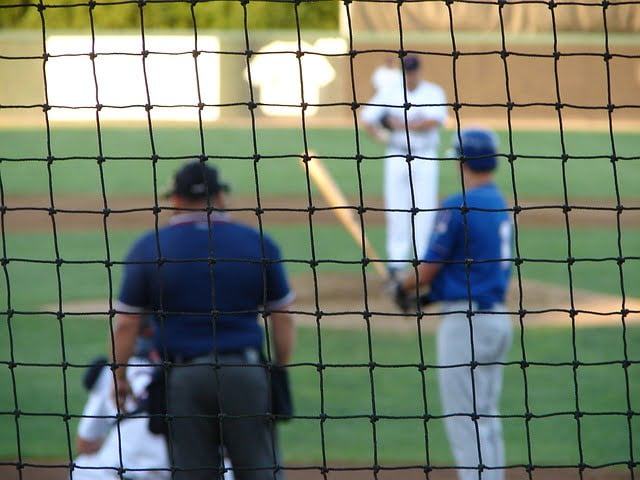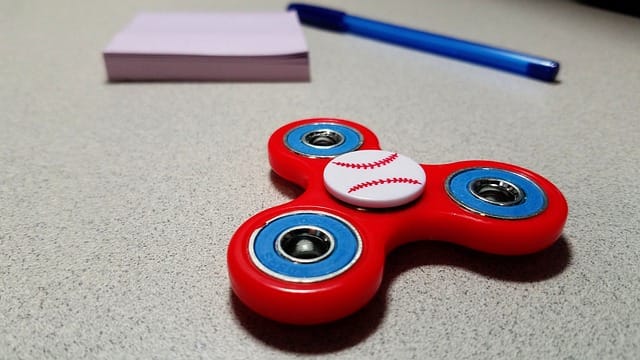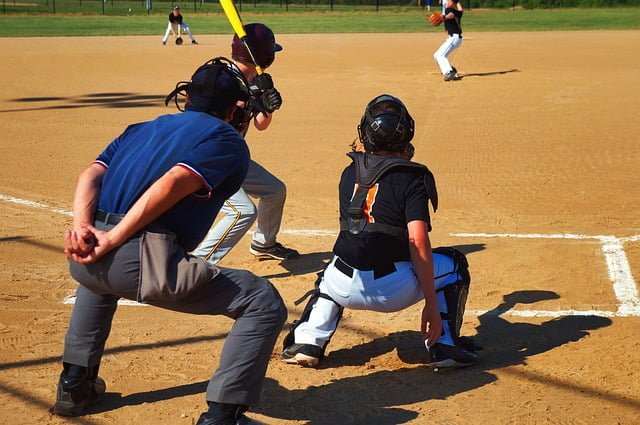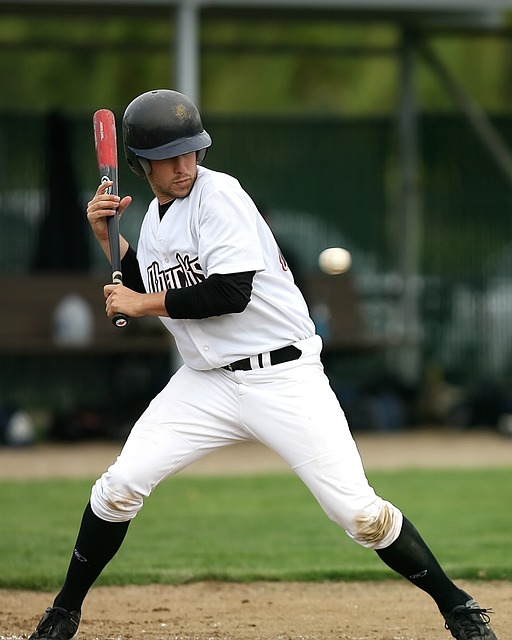All You Need To Know About Baseball

The tips in this article will get you learn all about baseball.
To boost your batting average, think about hitting the baseball at the fence rather than over it. The idea is to hit the ball in the direction in which it came. If you spend too much time lofting the ball, you’ll get a lot of fly ball outs.
If you’d really like your batting average to increase, focus on hitting towards the fence and not necessarily hitting over the fence. You basically want the baseball heading back to where it came from. It is oftentimes easy to catch your ball that soars through the air.
As a coach, you must keep player enthusiasm high. Group activities such as pizza parties can help your team bond so they can work well together. Baseball should remain enjoyable for your team.
Put your third finger onto the seam of the baseball. This will give you grip the ball.
Put your weight onto your back foot to power up your batting. If you are right-handed, your weight should be on the right foot. This provides extra power coming from the rear foot during your swing.
You need to remember safety in mind when playing sports. This is true for baseball. You can help protect yourself by always be aware of where the baseball is. You may get a tooth knocked out by errant balls if you are distracted.
When pitching the ball, you need to learn how to properly hold and throw the ball. The middle finger must be placed on the seam of the ball. Then, place a thumb on the opposite seam. This lets you grip the bat for the best distance and speed with some improved accuracy.
You need to wear a batting helmet when hitting the ball. A helmet will protect you from head injuries. Good helmets also have a shield to protect the battery’s face.
You should be the best hustler your team has. You must try to be the sort of player whose dedication is an example to others. Being this type of leader can really change the course of your team’s history. You want to be the person that’s seen as the real difference maker.
Make sure you stay aware of where every player is located. Many collisions can be avoided by simply knowing where the other players are on the field. Head injuries may happen when there is a frequent result of collisions. The easiest way to avoid a collision is to let your players know when you are going after it.
When coaching baseball, it’s important that your practice schedule is solid so all players are aware of what’s happening and are able to set personal goals. In general terms, proper baseball practice ought to include a short warm-up and twenty or so minutes of solo and team drills. Base running for 5 minutes and 10 minutes of team defense are great inclusions. The last 10 minutes should focus on drills for position-specific defense and cool down. Conclude with a brief team discussion.
The way the grass plays a role in how ground balls. The lines that you see cut into the outfield can sometimes cause the baseball go a different way as it rolls across the ground. By learning the how the ball reacts while rolling along those lines, you’ll be able to figure out where the ball is going to be stopping.
When running the bases, don’t ignore the signs that your base coaches are giving you. Remember, the base coaches have the benefit of a better view of the whole field. Watch them as you round the bases, and try to avoid looking at the ball. Let the base coaches be your eyes. If they tell you to stop, stop. If they tell you to run, run!
Break in before a new glove prior to the beginning of the season. If you are lucky and have a new glove for your season, you need to take a couple of weeks before playing with it to work it in. Throw your ball into it. Leather softener should be used to break the leather. Use your fist to punch the webbing in. A glove works better in practice.
As an outfielder you need to focus on who the batter is. Right-handed batters hit more balls to left field. Lefties will hit the ball towards the right side. Knowing how batting works will allow you to figure out where you can expect the ball to go when the pitch gets thrown.
Reach toward the ball as you step with the other foot, keeping one foot firmly on the base.
Break in your baseball glove before the practice season even begins. If you have a new glove, it really does pay to work it in before you start playing. Throw your baseball into it. Use a leather softener on it. Put pressure on the weave in the glove. When you break your glove in, you will feel more comfortable fielding.
Don’t be scared to sacrifice yourself when you’re the batter.That’s all part of being on a team player. You may need to bunt your teammate over. You may not get the individual pride that you would with a home run or a base hit, but it’s important that you take one for the team.
When you’re pitching the ball, you should realize you can’t forget that the ball will be in play when you release it. Many times it goes into the catcher’s glove and then quietly back to you. However, you need to play defense if the batter makes contact, which often requires quick reflexes to stay out of harm’s way.
A lot of the catcher grabs it and thrown back to you. However, you have to be at the defensive at all times as soon as you touch the ball, and you also have to react quickly in order to protect yourself at times.
When bunting, make sure the handle faces third or the head of the bat faces first. The bases are in reverse for left-handed batters. The correct angling of the bat will keep the bunt fair, and it won’t go back to the pitcher.
To help improve the direction of a bunt, and to avoid it going back to the mound, or you can point the bat’s head toward first base. Reverse this if you are a left handed batters.This makes sure that the pitcher can’t catch the bunt.
If you don’t swing fast enough, you should choke up on your bat some. Choking up is when your hands move up the bat’s base some so that you get them closer to the barrel of the bat. The result is a quicker, more compact swing. It may help you keep at speed with a pitcher that might be a bit too quick for you.
Watch a pitcher’s feet in order to make sure you’re not get thrown out on first base. When his left foot leaves the ground, they must pitch it or balk, sending you to second.
To correctly toss a knuckleball, grip the ball’s seams with the fingertips. You will then be able to throw the ball without spinning it, meaning you can use wind currents to frustrate a hitter when the ball sips and turns suddenly. The pitch is a success if the batter swings and misses.
Listen to the sounds of your whole body when you pitch. Shoulder injuries often occur if a pitcher frequently overuses his arm. To keep from developing shoulder injury, limit the time you practice to only three times per week. This will give your shoulder rest up.
Are you aware of how bats can differ? Good metal bats ought to weigh no more than three ounces more than the bat measures in length. For instances 31 ounces is a good weight for a bat measuring 34 inches. Remember this formula so that you pick the right bat.
Keep baseball cards in plastic sleeves to ensure they are kept in top condition. These let you view the card on both sides and keep them to air. Keep them away from light to avoid fading. Cards that are in perfect condition are worth far more.
To avoid a catcher’s interference penalty, stay put until the ball hits your glove. If a runner takes off to steal, start moving as the pitch is on the way, but if your glove contacts the bat while the batter swings, he gets first base on interference.
Hold your catcher’s mitt on top of your left knee to block your pitching signs from the coach at third base coach. This will prevent the coach on third from relaying back your signs and tipping off the batter.
When pitching, hear what your body is telling you. Many shoulder injuries occur when a pitcher overuses his arm. To help ensure you do not cause a shoulder injury, limit your practice to three times a week. This lets your shoulder rest every few days which will allow you to minimize injuries.
Use different signs for pitches when there is a player on second base so runners don’t know your pitches. Change the signs so the team does not know what you’re doing.
Practice double plays if you are an infielder. Double plays are a pitcher’s best friend. Double plays can pop up in a huge variety of different situations; good infielders are always ready for them. Repeat the drills until they are second nature.
Wear the right kind of cleats when playing baseball. Baseball is played on dirt and grass. Both of these surfaces can be very slippery at times. You need to have a cleat that will keep your feet firmly planted so you from slipping and injuring yourself while playing. Ignoring standard shoe can cause injuries on game day.
Given the energy expended playing baseball, proper nutrition is essential. This means you need to eat protein filled meals before the game and on game day. For an added boost of energy, eat some complex carbohydrates one or two hours before your game.
Now get out on the field and show off your new skills. There are many rewarding moments in baseball; you just need to play to experience them. Now is the time to play ball!
Fielding third base means staying within the baseline. Third is a busy place to be due to the frequent line drives, so readiness is essential.


